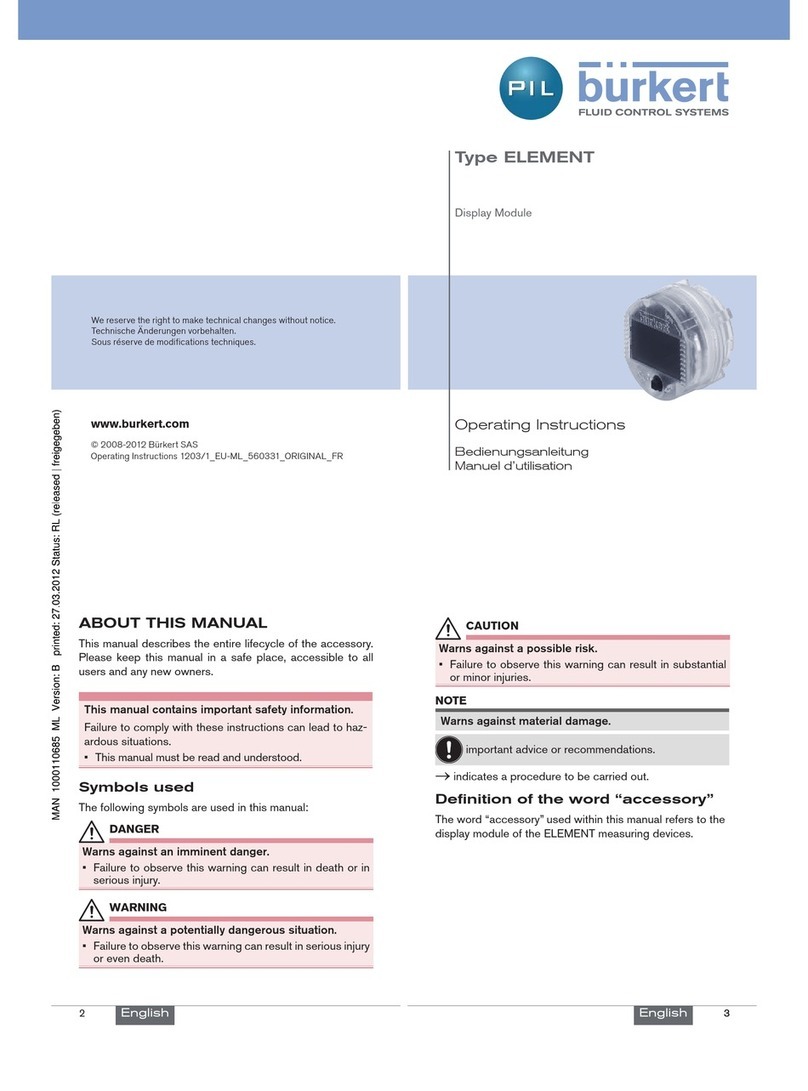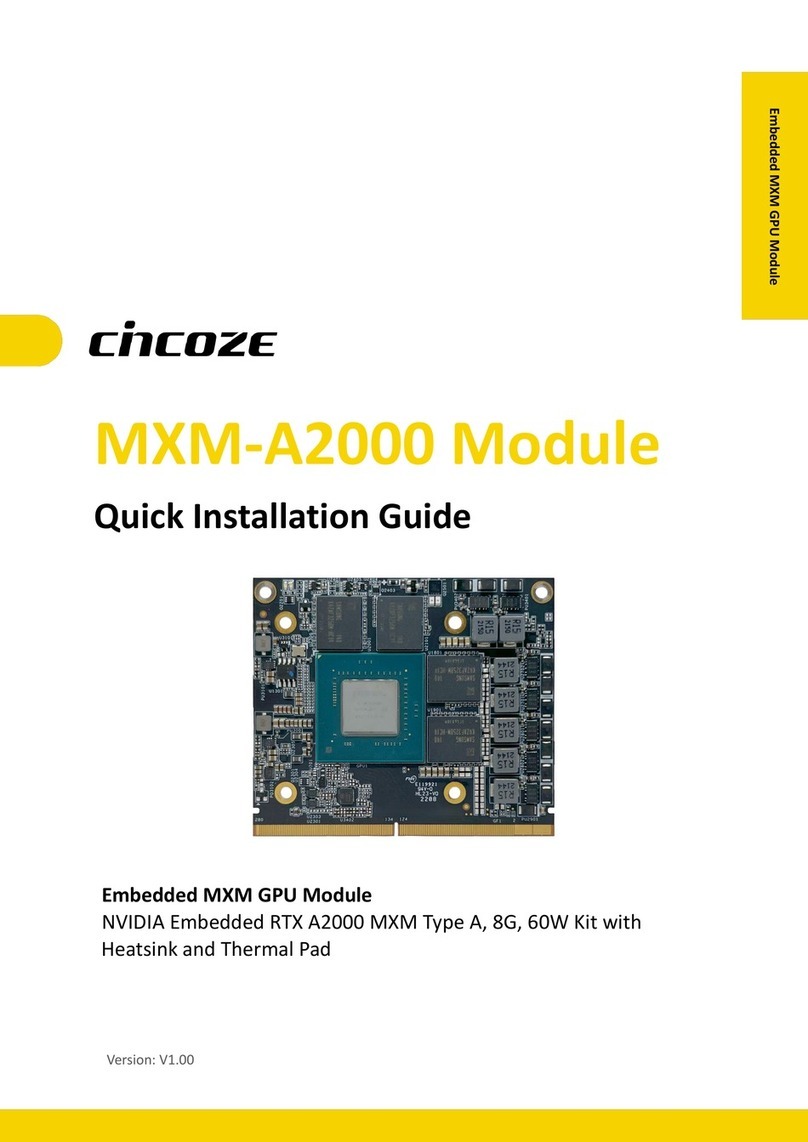Intertronic IDMHDV-130 User manual

For assistance and enquiries, please contact one of our
technical specialists:
01865 842842
sales@intertronics.co.uk
INTERTRONICS
12A Station Field Industrial Estate
Banbury Road
Kidlington
Oxfordshire
England
OX5 1JD
www.intertronics.co.uk
Version 1.0
July 2017
IDMHDV-130
Handheld Diaphragm Valve
User Manual
www.intertronics.co.uk/idmhdv-130
Station Field Industrial Estate
Banbury Road, Kidlington
Oxfordshire, England OX5 1JD
t 01865 842842
e orders@intertronics.co.uk
www.intertronics.co.uk

IDMHDV-130 Handheld Diaphragm Valve User Manual
IDMHDV-130 Handheld Diaphragm Valve User Manual
Thank you for purchasing the IDMHDV-130 Handheld Diaphragm Valve.
For optimum performance and results, please read this manual carefully. Ensure that all operators and
personnel are adequately trained for use with this product.
This document is based on information available and correct at the time of publication. The statements,
technical information and recommendations contained herein are based on knowledge we believe to be
reliable but they are not to be construed in any manner as warrantees expressed or implied. The user
shall determine the suitability of the product for his intended use and the user assumes all risk and
liability whatsoever in connection therewith.
Allen® is a registered trademark of the Apex Tool Group, LLC.
For any queries regarding this product, please contact Intertronics directly.
[blank page]
9

IDMHDV-130 Handheld Diaphragm Valve User Manual
IDMHDV-130 Handheld Diaphragm Valve User Manual
Troubleshooting
Problem
Possible Cause
Corrective Action
Valve does
not cycle
•Air pressure to air section is
too low
•Stroke adjustment bolt is
bottomed out
•Material has cured in the
valve
•Valve was assembled w/o
lubricating the O-ring seals
•Increase air pressure to
between 50-80 psi
•Back out stroke adjustment bolt
by turning it counter-clockwise
•Disassemble and clean valve
•Disassemble valve, lubricate
seals and re-assemble
Material
leaks from
valve tip
•Diaphragm is worn
•Air bubble trapped in fluid
body or in dispense needle
•Replace diaphragm
•Flip valve upside down and cycle
until air bubbles are removed
Valve leaks
from mid-
section
•Diaphragm is worn or
damaged
•O-Ring is worn or damaged
•Replace diaphragm
•Replace O-ring
Valve does
not
dispense
anything
•Fluid pressure is too low
•Material has cured in fluid
section
•Stroke adjustment bolt is set
too low
•Increase fluid pressure
•Disassemble and clean valve
•Back out stroke adjustment bolt
by turning it counter-clockwise
Air bubbles
in fluid
•Valve not properly purged
•Problem with fluid delivery
system
•Stroke adjustment set back
too far
•Flip valve upside down and cycle
until air bubbles are removed
•Diagnose and repair
•Turn down stroke adjustment
Dispense
rate too
fast
•Fluid pressure set too high
•Stroke adjust set too high
•Dispense tip gauge too large
•Decrease fluid pressure
•Turn stroke adjust clockwise
•Replace dispense tip with
smaller size
Dispense
rate too
slow
•Fluid pressure set too low
•Stroke adjust set too low
•Dispense tip gauge too small
•Increase fluid pressure
•Turn stroke adjust counter-
clockwise
•Replace dispense tip with larger
size
Table of Contents
Theory of Operation ..................................................................... 2
Air Section............................................................................... 2
Fluid Section............................................................................ 2
Safety......................................................................................... 2
Set Up ........................................................................................ 3
Diagram #IDMHDV-130 ............................................................. 4-5
Operation.................................................................................... 6
Routine Cleaning and Disassembly ................................................. 6
General Assembly ........................................................................ 7
Troubleshooting ........................................................................... 8
Note: Throughout this manual, numbers denoted in brackets refer to the
corresponding parts labelled in Diagram #IDMHDV-130
8
1

IDMHDV-130 Handheld Diaphragm Valve User Manual
IDMHDV-130 Handheld Diaphragm Valve User Manual
Theory of Operation
The IDMHDV-130 is an all-plastic handheld dispense valve that uses a unique rigid
diaphragm design to act as a front closing valve to accurately dispense small dots and
fine beads. This valve is designed for handheld applications, to take the place of
traditional syringe dispensing or other manually applied fluids. The all-plastic
construction allows adhesives such as cyanoacrylates and anaerobic materials to be
dispensed through the valve along with a variety of other low to medium viscosity
fluids. Applications can include potting and the dispensing of dots and beads.
The IDMHDV-130 body comprises:
1) Air section (aluminium top portion)
2) Fluid section (acetal body with PTFE diaphragm and polyethylene luer
adapter)
Air Section
The air section is an aluminium body with a simple piston/cylinder combination using
air to open the valve and a spring to close. A stroke adjustment bolt in the upper air
body controls how far the piston and needle assembly can retract, thus regulating the
rate of fluid flow along with a lock nut to hold it in place.
Note: Upon delivery, the stroke adjustment bolt is fully closed.
Fluid Section
The fluid section is made up of acetal with a rigid PTFE diaphragm connected to the
air piston. Fluid dispenses as the point of the diaphragm is lifted out of the fluid section
orifice then stops as it moves back into place. The stroke adjustment bolt of the air
cylinder regulates the distance that the diaphragm tip can lift out of the fluid section
orifice thus controlling rate of fluid flow. An M3 female thread is available in the fluid
section to hold a grounding wire in place to remove any ESD charge.
Wetted parts on the IDMHDV-130 include:
•Acetal (ESD Safe)
•PTFE
•Polyethylene
Safety
Due to material contents being under pressure, eye protection is recommended for
operators. Refer to the SDS for the material being dispensed for other precautions.
6) Remove the cylinder cap (7) and stroke adjustment assembly (8, 9) from the
air cylinder (6) to remove the spring (12).
7) Insert a flat head screwdriver into the slot of the piston (5) to hold it in place
then spin the diaphragm (2) counter-clockwise to unthread it from the piston.
8) Slide the cylinder end cap (4) off the piston.
9) Push the threaded end of the piston (5) into the air cylinder (6) to slide it
through the back and remove.
10) Remove the 007 Nitrile O-ring (15) from the air cylinder and the 116 Nitrile
O-ring (13) from the piston (5).
11) Clean all of the wetted parts thoroughly with an appropriate solvent.
Replace components with spares provided in the spare parts kit, if necessary.
General Assembly
All O-rings must be lubricated with a small amount of silicone grease.
1) Thread the lock nut (9) onto the stroke adjustment (8) with knurled side first.
2) Thread the stroke adjustment (8) into the cylinder cap (7).
3) Mount the 116 Nitrile O-ring (13) onto the piston (5).
4) Apply a small amount of silicone grease to the inside of the air cylinder (6)
then drop in the piston (5).
5) Mount the 007 Nitrile O-ring onto the end of the piston (5) and slide it down
into the groove of the air cylinder (6).
6) Place the cylinder end cap (4) onto the piston (5), lip side first and slide up
to the air cylinder (6)
7) Using a square head screwdriver, hold the piston (5) in place and thread the
diaphragm (2) on tightly.
8) If the diaphragm (2) does not square up with the air cylinder (6) use the
square head screwdriver to turn the piston until it is aligned.
9) Place the 016 FFKM O-ring (14) into the groove of the fluid body (1).
10) Place the air cap & diaphragm assembly on top of the fluid body (1) and
assemble with four machine screws (11) using a 3/32” Allen key to tighten
them down evenly.
11) Thread the plastic luer adapter (4) into the bottom of the fluid section (3)
and tighten using a spanner.
Note: Be sure not to over-tighten the luer adapter (4).
2
7

IDMHDV-130 Handheld Diaphragm Valve User Manual
IDMHDV-130 Handheld Diaphragm Valve User Manual
Operation
1) Set up the valve as outlined in the Setup procedures (page 3).
2) Regulate the air pressure operating the valve between 50-80psi.
3) Making sure that the valve is not aimed toward anyone, cycle the valve several
times. When the valve is cycling, the piston (5) can be heard hitting the stroke
adjustment bolt (8). If the valve is not cycling properly, refer to the
Troubleshooting section (page 8).
4) When the fluid delivery system is connected to the valve, pressurise the
material to be dispensed.
5) Once again, cycle the valve open to purge. Fluid should begin to dispense from
the tip of the valve. Elevate the valve with the tip pointing up in the air, then
hold a purge cup underneath the tip and cycle the valve to open until all air is
removed.
6) Check fluid connection for leaks. If the valve is leaking or dripping, refer to the
Troubleshooting section (page 8).
7) Adjust the material pressure until the desired fluid flow is achieved.
8) Turn the stroke adjustment bolt (8) until the desired flow rate is achieved.
Turning the adjustment clockwise will decrease the material flow rate and
counter-clockwise will increase the material flow rate. If the stroke is turned all
the way down, it will stop fluid flow entirely.
9) Once the stroke is set, tighten the lock nut (9) against the cylinder cap.
Note: refer to the Troubleshooting section (page 8) for any problems.
Routine Cleaning and Disassembly
Cleaning and rebuilding the valve will be required from time to time. A spare parts kit
(IDMHDV-130-SP) is available with all the normal wear parts included (1 x Diaphragm
(IDMHDV-130-114-9539), 1 x Nitrile O-Ring (IDMHDV-130-VLV-116B), 1 x FFKM O-Ring
(IDMHDV-130-VLV-016K), 1x Nitrile O-Ring (IDMHDV-130-VLV-007B) and 1 x Plastic
Luer adapter (IDMHDV-130-V300-UV)). Contact Intertronics to order.
1) Flush the valve thoroughly with an appropriate solvent before disassembly.
(Refer to SDS of fluid for suggested solvent).
2) Remove fluid pressure from the system, and then remove all fluid delivery
fittings, hoses, etc. from the valve. Remove operating air pressure from the
valve.
3) Using a spanner, unthread and remove the luer adapter (10) from the fluid body
(1).
4) Using a 3/32” Allen® key, evenly remove the four machine screws (11) from
the cylinder cap (7).
5) Pull the fluid body (1) apart from the upper assembly and remove the 016 FFKM
O-ring (14).
Set Up
To actuate the air section the IDMHDV-130 requires a dispensing controller, such as
the FISDC100 Automatic liquid dispenser. Contact Intertronics for more information.
The valve should be operated with clean, dry air between 50-80psi. One #10-32
threaded air port is located on the air section of the valve to open the valve when air
is applied. A spring is then used to return the valve to the closed position. A quick
connect air fitting is typically supplied with the IDMHDV-130 to fit 5/32” tubing.
Fluid is supplied to the IDMHDV-130 through the 1/8” NPT port located on the acetal
fluid section of the valve.
6
3

IDMHDV-130 Handheld Diaphragm Valve User Manual
IDMHDV-130 Handheld Diaphragm Valve User Manual
Diagram #IDMHDV-130
Note: Throughout this manual, numbers denoted in brackets refer to the
corresponding parts labelled in Diagram IDMHDV-130
Item
Description
Part Number
Qty
1
Fluid Section, Wand
IDMHDV-130-214-12039
1
2
Diaphragm*
IDMHDV-130-114-9539
1
3
Expansion Insert
IDMHDV-130-95110A112
1
4
Cylinder End Cap
IDMHDV-130-214-11936
1
5
Piston
IDMHDV-130-214-10420
1
6
Air Cylinder
IDMHDV-130-214-11937
1
7
Cylinder Cap
IDMHDV-130-214-11964
1
8
Stroke Adjustment
IDMHDV-130-214-11981
1
9
Lock Nut
IDMHDV-130-214-11996
1
10
Nitrile O-Ring
IDMHDV-130-VLV-007B
1
11
Socket Head Cap Screw
IDMHDV-130-SH5-40x1.625
4
12
Spring
IDMHDV-130-01511
1
13
Nitrile O-Ring*
IDMHDV-130-VLV-116B
1
14
FFKM O-Ring*
IDMHDV-130-VLV-016K
1
15
Nitrile O-Ring*
IDMHDV-130-VLV-007B
1
* These parts are included in the IDMHDV-130-SP Spare Parts Kit (1
x Diaphragm (IDMHDV-130-114-9539), 1 x Nitrile O-Ring (IDMHDV-
130-VLV-116B), 1 x FFKM O-Ring (IDMHDV-130-VLV-016K), 1x Nitrile
O-Ring (IDMHDV-130-VLV-007B) and 1 x Plastic Luer adapter (IDMHDV-
130-V300-UV)). Contact Intertronics to order.
4
5

IDMHDV-130 Handheld Diaphragm Valve User Manual
IDMHDV-130 Handheld Diaphragm Valve User Manual
Diagram #IDMHDV-130
Note: Throughout this manual, numbers denoted in brackets refer to the
corresponding parts labelled in Diagram IDMHDV-130
Item
Description
Part Number
Qty
1
Fluid Section, Wand
IDMHDV-130-214-12039
1
2
Diaphragm*
IDMHDV-130-114-9539
1
3
Expansion Insert
IDMHDV-130-95110A112
1
4
Cylinder End Cap
IDMHDV-130-214-11936
1
5
Piston
IDMHDV-130-214-10420
1
6
Air Cylinder
IDMHDV-130-214-11937
1
7
Cylinder Cap
IDMHDV-130-214-11964
1
8
Stroke Adjustment
IDMHDV-130-214-11981
1
9
Lock Nut
IDMHDV-130-214-11996
1
10
Nitrile O-Ring
IDMHDV-130-VLV-007B
1
11
Socket Head Cap Screw
IDMHDV-130-SH5-40x1.625
4
12
Spring
IDMHDV-130-01511
1
13
Nitrile O-Ring*
IDMHDV-130-VLV-116B
1
14
FFKM O-Ring*
IDMHDV-130-VLV-016K
1
15
Nitrile O-Ring*
IDMHDV-130-VLV-007B
1
* These parts are included in the IDMHDV-130-SP Spare Parts Kit (1
x Diaphragm (IDMHDV-130-114-9539), 1 x Nitrile O-Ring (IDMHDV-
130-VLV-116B), 1 x FFKM O-Ring (IDMHDV-130-VLV-016K), 1x Nitrile
O-Ring (IDMHDV-130-VLV-007B) and 1 x Plastic Luer adapter (IDMHDV-
130-V300-UV)). Contact Intertronics to order.
4
5

IDMHDV-130 Handheld Diaphragm Valve User Manual
IDMHDV-130 Handheld Diaphragm Valve User Manual
Operation
1) Set up the valve as outlined in the Setup procedures (page 3).
2) Regulate the air pressure operating the valve between 50-80psi.
3) Making sure that the valve is not aimed toward anyone, cycle the valve several
times. When the valve is cycling, the piston (5) can be heard hitting the stroke
adjustment bolt (8). If the valve is not cycling properly, refer to the
Troubleshooting section (page 8).
4) When the fluid delivery system is connected to the valve, pressurise the
material to be dispensed.
5) Once again, cycle the valve open to purge. Fluid should begin to dispense from
the tip of the valve. Elevate the valve with the tip pointing up in the air, then
hold a purge cup underneath the tip and cycle the valve to open until all air is
removed.
6) Check fluid connection for leaks. If the valve is leaking or dripping, refer to the
Troubleshooting section (page 8).
7) Adjust the material pressure until the desired fluid flow is achieved.
8) Turn the stroke adjustment bolt (8) until the desired flow rate is achieved.
Turning the adjustment clockwise will decrease the material flow rate and
counter-clockwise will increase the material flow rate. If the stroke is turned all
the way down, it will stop fluid flow entirely.
9) Once the stroke is set, tighten the lock nut (9) against the cylinder cap.
Note: refer to the Troubleshooting section (page 8) for any problems.
Routine Cleaning and Disassembly
Cleaning and rebuilding the valve will be required from time to time. A spare parts kit
(IDMHDV-130-SP) is available with all the normal wear parts included (1 x Diaphragm
(IDMHDV-130-114-9539), 1 x Nitrile O-Ring (IDMHDV-130-VLV-116B), 1 x FFKM O-Ring
(IDMHDV-130-VLV-016K), 1x Nitrile O-Ring (IDMHDV-130-VLV-007B) and 1 x Plastic
Luer adapter (IDMHDV-130-V300-UV)). Contact Intertronics to order.
1) Flush the valve thoroughly with an appropriate solvent before disassembly.
(Refer to SDS of fluid for suggested solvent).
2) Remove fluid pressure from the system, and then remove all fluid delivery
fittings, hoses, etc. from the valve. Remove operating air pressure from the
valve.
3) Using a spanner, unthread and remove the luer adapter (10) from the fluid body
(1).
4) Using a 3/32” Allen® key, evenly remove the four machine screws (11) from
the cylinder cap (7).
5) Pull the fluid body (1) apart from the upper assembly and remove the 016 FFKM
O-ring (14).
Set Up
To actuate the air section the IDMHDV-130 requires a dispensing controller, such as
the FISDC100 Automatic liquid dispenser. Contact Intertronics for more information.
The valve should be operated with clean, dry air between 50-80psi. One #10-32
threaded air port is located on the air section of the valve to open the valve when air
is applied. A spring is then used to return the valve to the closed position. A quick
connect air fitting is typically supplied with the IDMHDV-130 to fit 5/32” tubing.
Fluid is supplied to the IDMHDV-130 through the 1/8” NPT port located on the acetal
fluid section of the valve.
6
3

IDMHDV-130 Handheld Diaphragm Valve User Manual
IDMHDV-130 Handheld Diaphragm Valve User Manual
Theory of Operation
The IDMHDV-130 is an all-plastic handheld dispense valve that uses a unique rigid
diaphragm design to act as a front closing valve to accurately dispense small dots and
fine beads. This valve is designed for handheld applications, to take the place of
traditional syringe dispensing or other manually applied fluids. The all-plastic
construction allows adhesives such as cyanoacrylates and anaerobic materials to be
dispensed through the valve along with a variety of other low to medium viscosity
fluids. Applications can include potting and the dispensing of dots and beads.
The IDMHDV-130 body comprises:
1) Air section (aluminium top portion)
2) Fluid section (acetal body with PTFE diaphragm and polyethylene luer
adapter)
Air Section
The air section is an aluminium body with a simple piston/cylinder combination using
air to open the valve and a spring to close. A stroke adjustment bolt in the upper air
body controls how far the piston and needle assembly can retract, thus regulating the
rate of fluid flow along with a lock nut to hold it in place.
Note: Upon delivery, the stroke adjustment bolt is fully closed.
Fluid Section
The fluid section is made up of acetal with a rigid PTFE diaphragm connected to the
air piston. Fluid dispenses as the point of the diaphragm is lifted out of the fluid section
orifice then stops as it moves back into place. The stroke adjustment bolt of the air
cylinder regulates the distance that the diaphragm tip can lift out of the fluid section
orifice thus controlling rate of fluid flow. An M3 female thread is available in the fluid
section to hold a grounding wire in place to remove any ESD charge.
Wetted parts on the IDMHDV-130 include:
•Acetal (ESD Safe)
•PTFE
•Polyethylene
Safety
Due to material contents being under pressure, eye protection is recommended for
operators. Refer to the SDS for the material being dispensed for other precautions.
6) Remove the cylinder cap (7) and stroke adjustment assembly (8, 9) from the
air cylinder (6) to remove the spring (12).
7) Insert a flat head screwdriver into the slot of the piston (5) to hold it in place
then spin the diaphragm (2) counter-clockwise to unthread it from the piston.
8) Slide the cylinder end cap (4) off the piston.
9) Push the threaded end of the piston (5) into the air cylinder (6) to slide it
through the back and remove.
10) Remove the 007 Nitrile O-ring (15) from the air cylinder and the 116 Nitrile
O-ring (13) from the piston (5).
11) Clean all of the wetted parts thoroughly with an appropriate solvent.
Replace components with spares provided in the spare parts kit, if necessary.
General Assembly
All O-rings must be lubricated with a small amount of silicone grease.
1) Thread the lock nut (9) onto the stroke adjustment (8) with knurled side first.
2) Thread the stroke adjustment (8) into the cylinder cap (7).
3) Mount the 116 Nitrile O-ring (13) onto the piston (5).
4) Apply a small amount of silicone grease to the inside of the air cylinder (6)
then drop in the piston (5).
5) Mount the 007 Nitrile O-ring onto the end of the piston (5) and slide it down
into the groove of the air cylinder (6).
6) Place the cylinder end cap (4) onto the piston (5), lip side first and slide up
to the air cylinder (6)
7) Using a square head screwdriver, hold the piston (5) in place and thread the
diaphragm (2) on tightly.
8) If the diaphragm (2) does not square up with the air cylinder (6) use the
square head screwdriver to turn the piston until it is aligned.
9) Place the 016 FFKM O-ring (14) into the groove of the fluid body (1).
10) Place the air cap & diaphragm assembly on top of the fluid body (1) and
assemble with four machine screws (11) using a 3/32” Allen key to tighten
them down evenly.
11) Thread the plastic luer adapter (4) into the bottom of the fluid section (3)
and tighten using a spanner.
Note: Be sure not to over-tighten the luer adapter (4).
2
7

IDMHDV-130 Handheld Diaphragm Valve User Manual
IDMHDV-130 Handheld Diaphragm Valve User Manual
Troubleshooting
Problem
Possible Cause
Corrective Action
Valve does
not cycle
•Air pressure to air section is
too low
•Stroke adjustment bolt is
bottomed out
•Material has cured in the
valve
•Valve was assembled w/o
lubricating the O-ring seals
•Increase air pressure to
between 50-80 psi
•Back out stroke adjustment bolt
by turning it counter-clockwise
•Disassemble and clean valve
•Disassemble valve, lubricate
seals and re-assemble
Material
leaks from
valve tip
•Diaphragm is worn
•Air bubble trapped in fluid
body or in dispense needle
•Replace diaphragm
•Flip valve upside down and cycle
until air bubbles are removed
Valve leaks
from mid-
section
•Diaphragm is worn or
damaged
•O-Ring is worn or damaged
•Replace diaphragm
•Replace O-ring
Valve does
not
dispense
anything
•Fluid pressure is too low
•Material has cured in fluid
section
•Stroke adjustment bolt is set
too low
•Increase fluid pressure
•Disassemble and clean valve
•Back out stroke adjustment bolt
by turning it counter-clockwise
Air bubbles
in fluid
•Valve not properly purged
•Problem with fluid delivery
system
•Stroke adjustment set back
too far
•Flip valve upside down and cycle
until air bubbles are removed
•Diagnose and repair
•Turn down stroke adjustment
Dispense
rate too
fast
•Fluid pressure set too high
•Stroke adjust set too high
•Dispense tip gauge too large
•Decrease fluid pressure
•Turn stroke adjust clockwise
•Replace dispense tip with
smaller size
Dispense
rate too
slow
•Fluid pressure set too low
•Stroke adjust set too low
•Dispense tip gauge too small
•Increase fluid pressure
•Turn stroke adjust counter-
clockwise
•Replace dispense tip with larger
size
Table of Contents
Theory of Operation ..................................................................... 2
Air Section............................................................................... 2
Fluid Section............................................................................ 2
Safety......................................................................................... 2
Set Up ........................................................................................ 3
Diagram #IDMHDV-130 ............................................................. 4-5
Operation.................................................................................... 6
Routine Cleaning and Disassembly ................................................. 6
General Assembly ........................................................................ 7
Troubleshooting ........................................................................... 8
Note: Throughout this manual, numbers denoted in brackets refer to the
corresponding parts labelled in Diagram #IDMHDV-130
8
1

For assistance and enquiries, please contact one of our
technical specialists:
01865 842842
sales@intertronics.co.uk
INTERTRONICS
12A Station Field Industrial Estate
Banbury Road
Kidlington
Oxfordshire
England
OX5 1JD
www.intertronics.co.uk
Version 1.1
February 2024
IDMHDV-130
Handheld Diaphragm Valve
User Manual
www.intertronics.co.uk/idmhdv-130
17 Station Field Industrial Estate
Banbury Road, Kidlington
Oxfordshire, England OX5 1JD
t 01865 842842
e sales@intertronics.co.uk
www.intertronics.co.uk
Table of contents
Popular Control Unit manuals by other brands
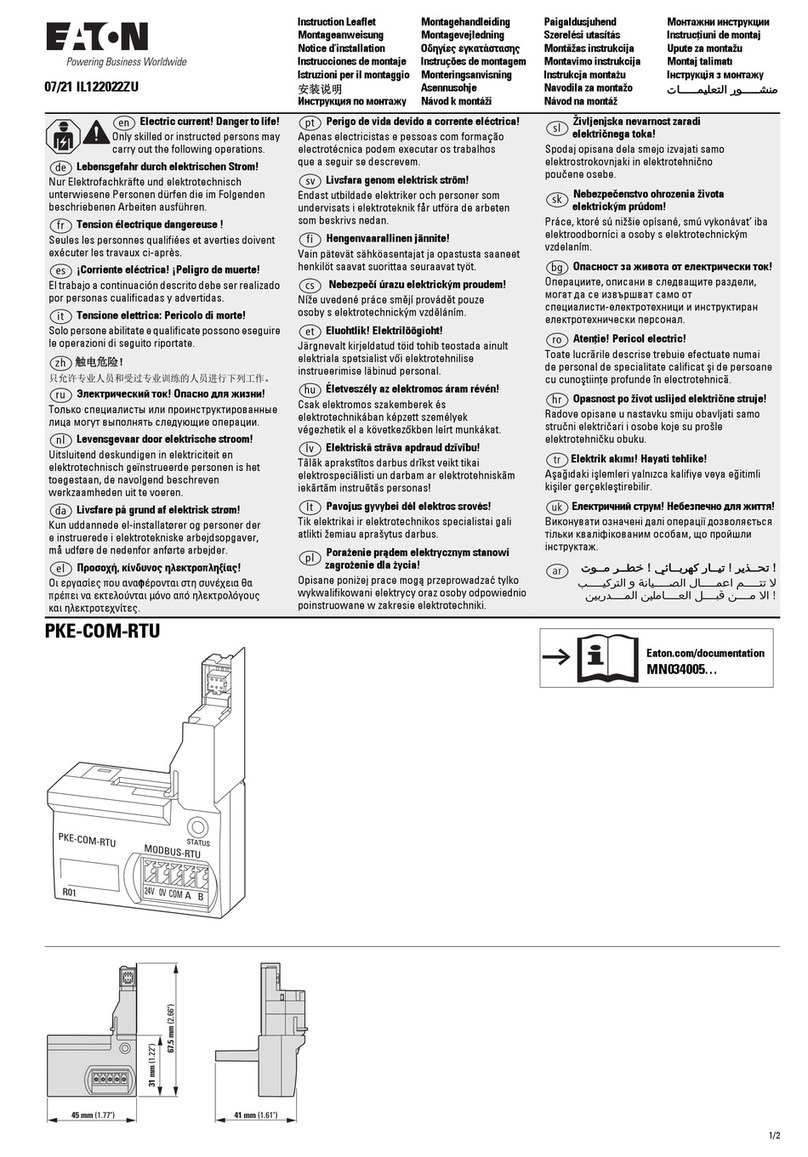
Eaton
Eaton PKE-COM-RTU Instruction leaflet
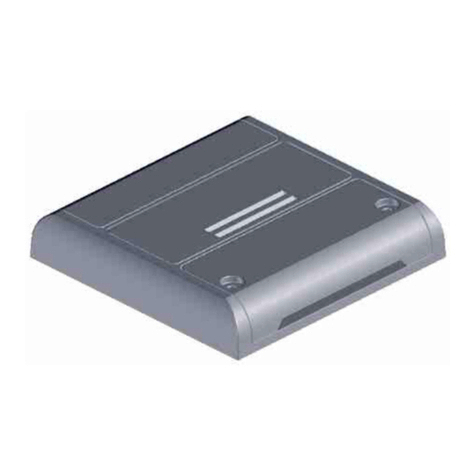
Nexta Tech
Nexta Tech PLANO-V5/RGBW quick start guide

RF-Star
RF-Star RF-SM-1312B1 Hardware data sheet

Pepperl+Fuchs
Pepperl+Fuchs KFD2-DWB-Ex1.D instruction manual

Siemens
Siemens SINUMERIK 840Di sl operating manual
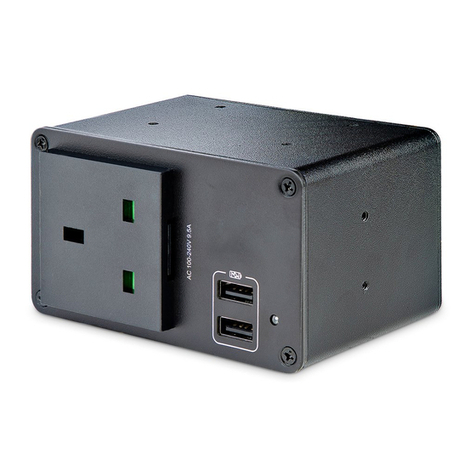
StarTech.com
StarTech.com BOX4MODULE quick start guide
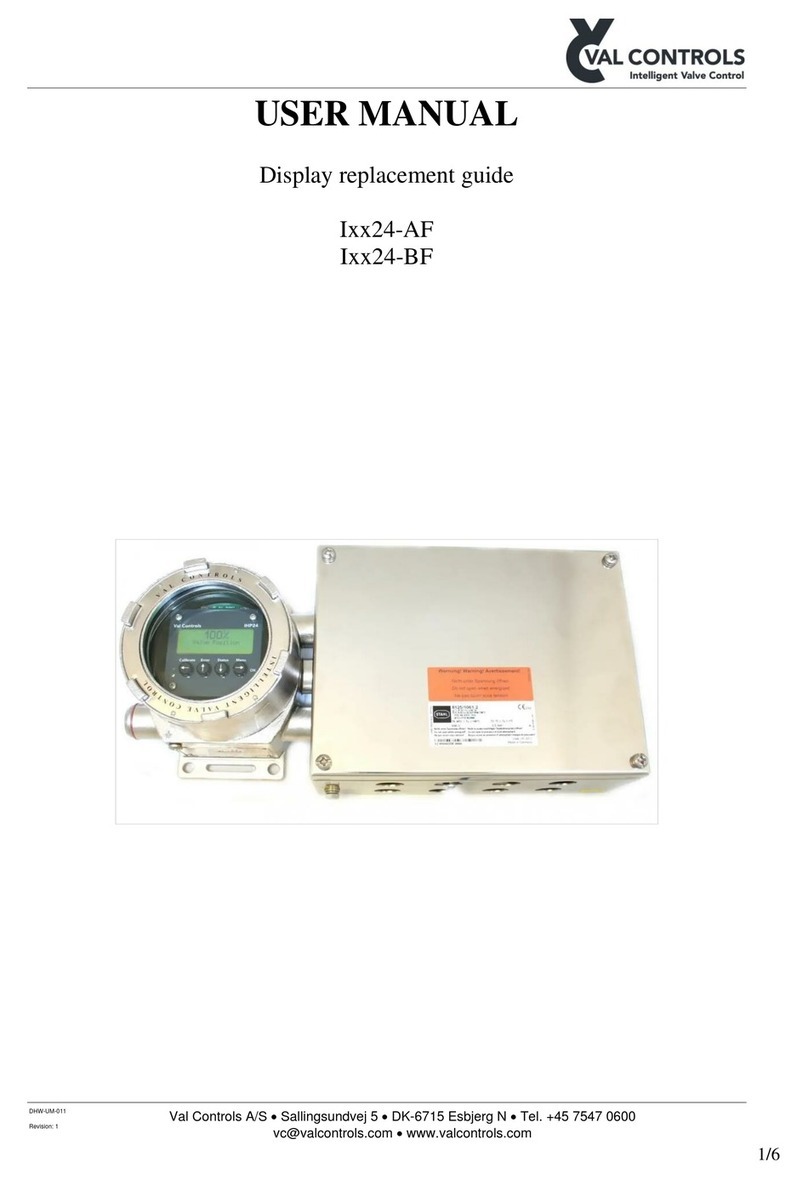
Val Controls
Val Controls I 24-AF Series Replacement guide
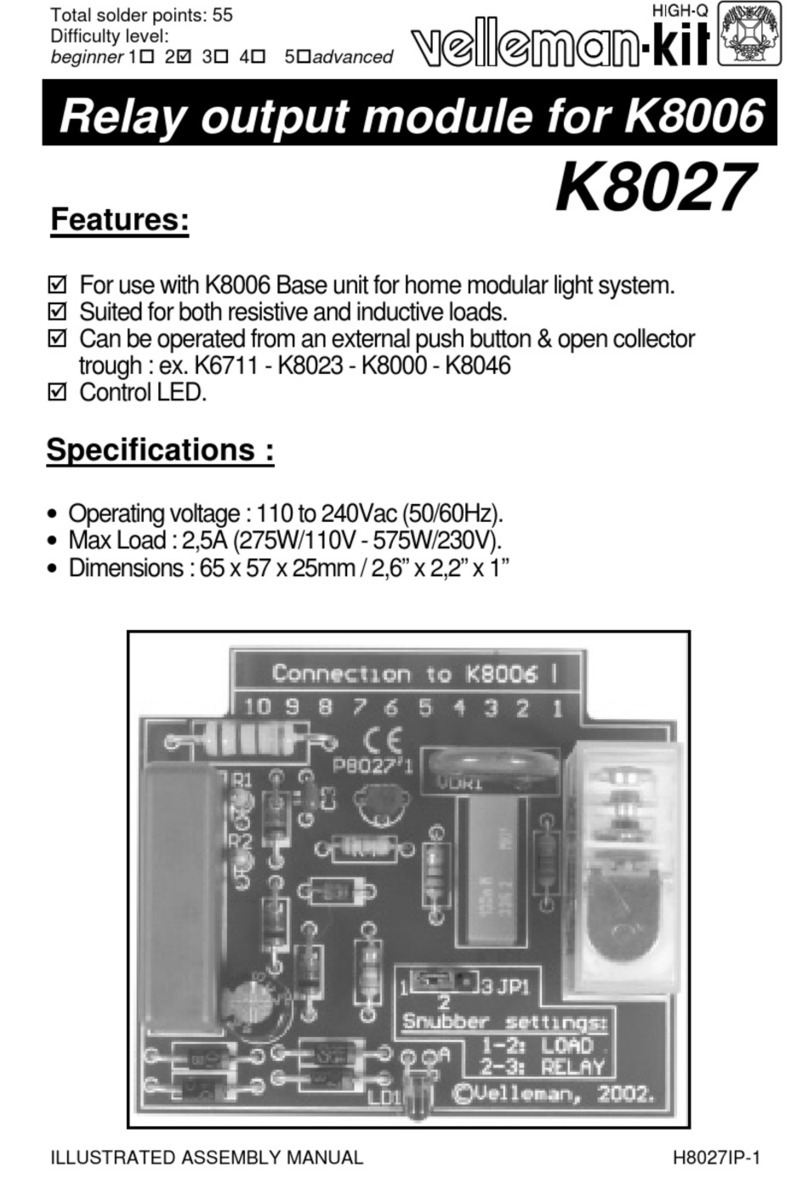
Velleman
Velleman K8027 Assembly manual
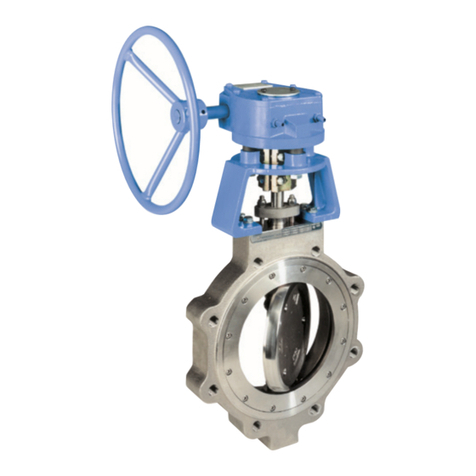
Metso
Metso Jamesbury Wafer-Sphere Series Installation maintenance and operating instructions
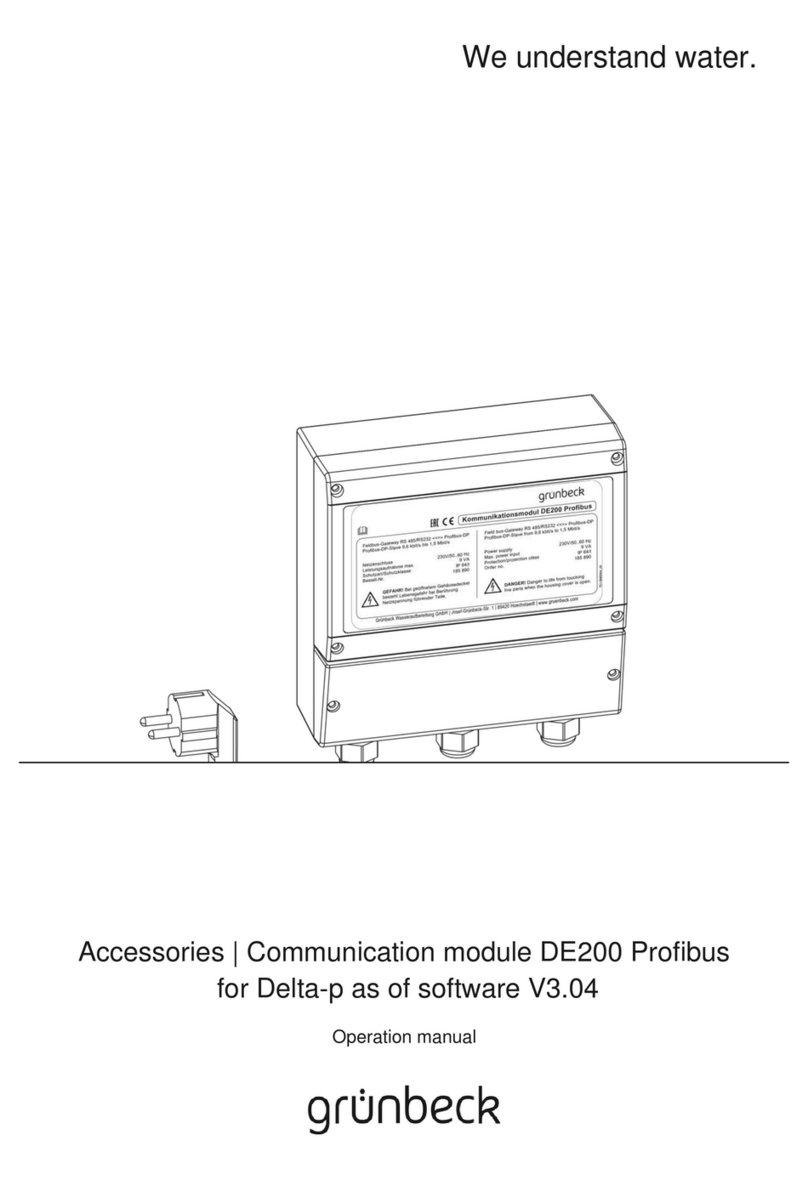
Grunbeck
Grunbeck DE200 Operation manual
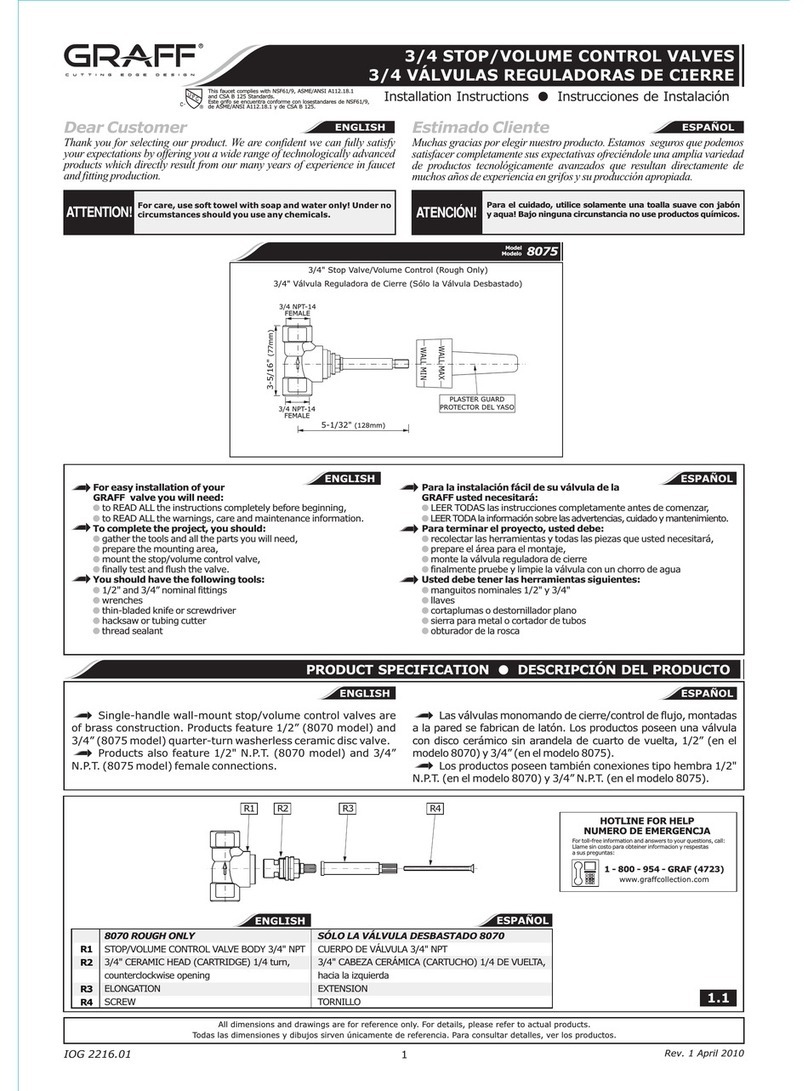
Graff
Graff 8075 installation instructions

Interlogix
Interlogix UltraSync UM-W7 Installation sheet



